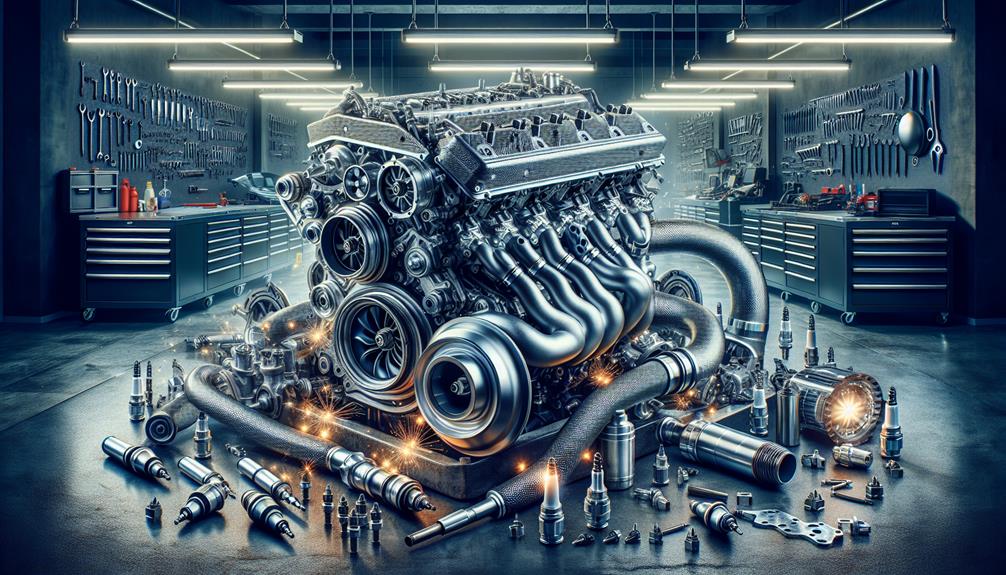
Revving Up: Advanced Techniques in Engine Tuning
February 9, 2024
The Heart of Your Car: Comprehensive Guide to Engine Maintenance
February 9, 2024The realm of high-performance auto repair engines is an intricate one, laden with complexities that demand a certain level of technical acumen. A pivotal aspect of this domain is the technique of turbocharging, a process that enhances the power output of an engine by forcing extra compressed air into the combustion chamber. This method is a common modification for those seeking to augment their vehicle’s capacity, but the intricacies of turbocharging are not to be underestimated. The selection of the correct turbocharger, understanding the impact of thermal management, as well as the adjustment of fuel and ignition mapping are all critical considerations. Though the process may seem daunting, a thorough comprehension of these elements can lead to significant improvements in engine performance. As we venture into this discussion, we’ll uncover the secrets that can transform a standard engine into a high-performance marvel.
Understanding Turbocharging Mechanics
Delving into the mechanics of turbocharging, it’s essential to comprehend that this process involves utilizing the engine’s exhaust gas to drive a turbine, which in turn powers an air compressor that boosts the intake of air, thereby significantly enhancing the engine’s performance. This turbocharger acts as an amplifier for the engine’s power output.
The turbocharging process follows a cyclical pattern: exhaust gases are expelled from the engine and directed towards the turbine wheel, causing it to spin. The turbine shaft, connected to the compressor wheel, drives the compressor, drawing in and pressurizing fresh air. This denser air charge allows more fuel to be burned, resulting in a substantial increase in torque and horsepower. Thus, turbocharging effectively augments engine efficiency and power.
Essential High-Performance Upgrades
To truly unlock an engine’s potential and achieve exceptional performance, there are several key upgrades that are integral to consider, ranging from the implementation of cold air intakes to the refinement of exhaust systems. These modifications can significantly improve power output and efficiency, but it requires a meticulous, technical approach.
– Cold Air Intakes: The denser the air, the more oxygen it contains, leading to improved combustion and power output.
– Exhaust Systems: Free-flowing exhausts remove waste gases more efficiently, improving engine breathing.
– ECU Tuning: This involves adjusting the engine control unit’s software to optimize performance.
Through these upgrades, we can create a seamlessly integrated high-performance engine. It’s not just about belonging to the community; it’s about driving the future of automotive performance.
Conclusion
In conclusion auto repair, optimizing engine performance through turbocharging is both a science and an art, requiring a comprehensive understanding of turbocharging mechanics and essential high-performance upgrades. The utilization of these techniques can result in significant performance enhancements, as evidenced by a 2016 study which found a 40% increase in horsepower following an efficient turbocharging upgrade. Thus, turbocharging is a key avenue for achieving superior engine performance.




